The Snow [RESERVE]: Dynamic Microclimate Strategies for South Boston Living
HONOR AWARD
Residential Design
Boston, MA, USA | Team: Sunmee Lee, Student ASLA; Phia Sennett, Student ASLA | Faculty Advisors: Craig Douglas
Harvard University Graduate School of Design
An understanding of the impact of micro climate is incredibly important in navigating this landscape. . . Fascinating.
- 2018 Awards Jury
PROJECT CREDITS
- Appreciation to Boston City Hall and Boston Public Works for fielding questions and sharing data pertaining to Reserve Channel.
Additional Photo Credits
- Sunmee Lee
- Phia Sennett
- Cy Chang
PROJECT STATEMENT
The [RESERVE] is a harborside residential community proposed for South Boston's Reserve Channel. Private residential property lines are not a central organizing feature at the [RESERVE]. Rather, the neighborhood is shared with Boston Public Works and is designed to support urban snowmelt and a dynamic landscape that generates a sense of community, a source of income and a service to the city of Boston. Life at the [RESERVE] nurtures community spirit and adaptation to intensifying snowstorms.
Microclimate control is the organizing force at the [RESERVE]. The neighborhood absorbs snow collected throughout South Boston and leverages melt to create vibrant landscape experiences. The journey from snow fields through an undulating topography filters contaminants from snow to sea. Microclimates are formed through dynamic relationships between residential buildings and landscape elements. Shadows and reflections are synchronized with residential design, plantings and seasonal programming. Foliage, ice formation, and snow accumulation register the thermal dimensions of microclimate "rooms". Snow, once a public burden, is redefined as a dynamic shared community resource that enriches residential life around Boston's Reserve Channel.
PROJECT NARRATIVE
1. Context and Challenge
The past decade has been the hottest on record in the Northeastern United States, and climate change is associated with increases in both evaporation and precipitation. Boston is not only getting hotter during summer months, in the winter the city is increasingly overwhelmed with snow. This proposal envisions a new performance in residential microclimate design that improves on snow hydrology strategies of the past.
Since enactment of the Clean Water Act in 1972, Boston stopped disposing of snow directly into waterways. By law, snow must now filter through soil to remove heavy metals, hydrocarbons, and other pollutants. With increased precipitation during winter months, snow is increasingly transforming Boston's spatial character and residents' experiences. The built environment was not designed or managed with the dexterity needed to accommodate this massive influx of snow. During winter months snow is now stored in empty parking lots. Accumulation in one South Boston lot during the 2015 snowstorms reached a height of 75 ft and did not fully melt until July. Due to decreased permeability of asphalt, there are few opportunities for melt to infiltrate the soil. Rather, run-off from snow melt collects additional hydrocarbons before entering Boston Harbor.
The proposed project offers a new residential community, co-located with Boston Public Works, where snow melt is integrated throughout the neighborhood's social and environmental fabric. The [RESERVE] reinterprets Boston's snow, not as a burden but as a constructive material, that transforms the lived experience for people who call South Boston home.
2. Design Intent: From Snow to Sea
Reserve Channel is an area in South Boston where there is increasing demand for mixed-income housing. The project's 15.2 acre site is currently an abandoned post-industrial property, adjacent to the former Exelon Power Plant. It is in the same vicinity as parking lots that operate as "snow farms" during winter months.
The proposal envisions the [RESERVE] as private housing co-located with public works, public recreation, and infrastructure within a single site and strategy. This proposal considers the aggregation of this multi-use landscape as a source of individual enjoyment that has a greater intelligence. The dynamic presence of snow shifts the binary between private residential space and public commons.
The proposed neighborhood is situated at the nexus between urban snow and the sea. Undulating topography creates, on one scale, individual carved spaces with slopes for sports programming and informal recreational use. Together these landforms are instruments graded to process the snow and offer a distinct atmosphere and purpose to the neighborhood.
The site's storing capacity addresses approximately 50% of the current volume of snow brought to South Boston. By decentralizing snow that is currently aggregated, design draws on microclimate strategies as the [RESERVE] to facilitate melt. The benefit of the snow service offsets the neighbourhood's low-density approach.
Positioning of residential buildings is determined by shadows and reflective properties designed to carefully craft microclimates around each building. New spatial relationships between architecture and landscape can work to manage the melt of snow. The arrangement of buildings throughout the [RESERVE] casts a composition of shadows designed to support the overall performance of the landscape. Smaller residences are arranged with snow mounds ploughed to the edge of the site from the city. By storing snow piles away from Reserve Channel, the plan elongates travel time, providing opportunities for infiltration and purification of contaminants absorbed by snow.
3. Strategic Phases
The journey from snow to sea navigates three strategic phases: Storage, Filtration, and Revitalization.
Storage
After snow is collected from Boston's streets and surfaces it will be stored in snow fields as an ephemeral landscape feature. The growth and melt of snow piles creates an ever-changing amplitude as a background for those living and visiting the [RESERVE]. Snow piles transform the residential experience by curating vistas, privacy, and circulation patterns. Walking trails around the perimeter of the snow piles will create a new landscape experience that curates vistas and facilitates walking paths for snowshoeing, urban skiing and other recreational activities. Pockets in the terrain collect water, creating ice patterns based on depth and surface areas.
Reflections and shadows cast by residential housing generate distinct microclimates throughout the [RESERVE]. Shadow studies were a central part of the process for developing relationships between residences and landscape elements. Exhaust from the residences' mechanical ventilation systems are integrated with heat sources to accelerate snow melt. Paving and architecture is designed jointly using an interconnecting heating system of pipes that thaw roads. Thawing sidewalks and priority road surfaces minimizes the use of chloride-based salt solutions. Road salt injures the roots of vegetation after infiltrating the soil. On average, the City of Boston uses 80,000 tons of salt each winter with the majority being imported from South America. The [RESERVE] will showcase innovative practices for outdoor winter living
Filtration
Once melted, snow water feeds private garden bioswales that filter and infiltrate melt. Snow will travel to and through the Reserve Channel by winding amongst residential buildings and landscapes. Along the way, toxins will be filtered by plants such as white willow (Salix alba) and winterberry (Ilex verticillate). Stabilizing species including cordgrass (Spartina) and summer sweet (Clethra alnifolia) address erosion prompted by snow melt. Snowmelt will replenish springtime grasses and reveal slopes in the undulating topography for recreation and relaxation. Perched above the bioswales, residential decking provides common space and views of green corridors at the [RESERVE]. Upkeep of these thaw zones will be a regular component of the filtration process at the [RESERVE], as snow ploughs pick up street debris.
The coloring of fall foliage registers microclimate differences generated by shadow and reflections. Each microclimate zone keep pace with its own seasonal rhythm. Maintaining relatively colder zones will allow for species in Boston's hardiness zone (6b) to continue surviving despite climate change. This includes at-risk plantings such as paper birch.
Revitalization
Melt that is cleansed by the bioswales at the [RESERVE] will have an afterlife as a recycled resource for the neighborhood. After journeying through a sequence of filtration zones, grey water will be used by the community for irrigation and for public skating and ice hockey when frozen. As the harbor's water quality continues to improve, activity along the Reserve Channel will intensify. More water-based programming will transform this post-industrial site. At high tide sailors and kayakers can journey to the bioswales and dock near [RESERVE] residences.
The [RESERVE] addresses the public challenge of snow management by integrating performance of architecture and landscape architecture at the residential scale. Snow is not something to be eliminated. Rather, it can be leveraged as a design material to diversify and enrich the experience of living in South Boston.
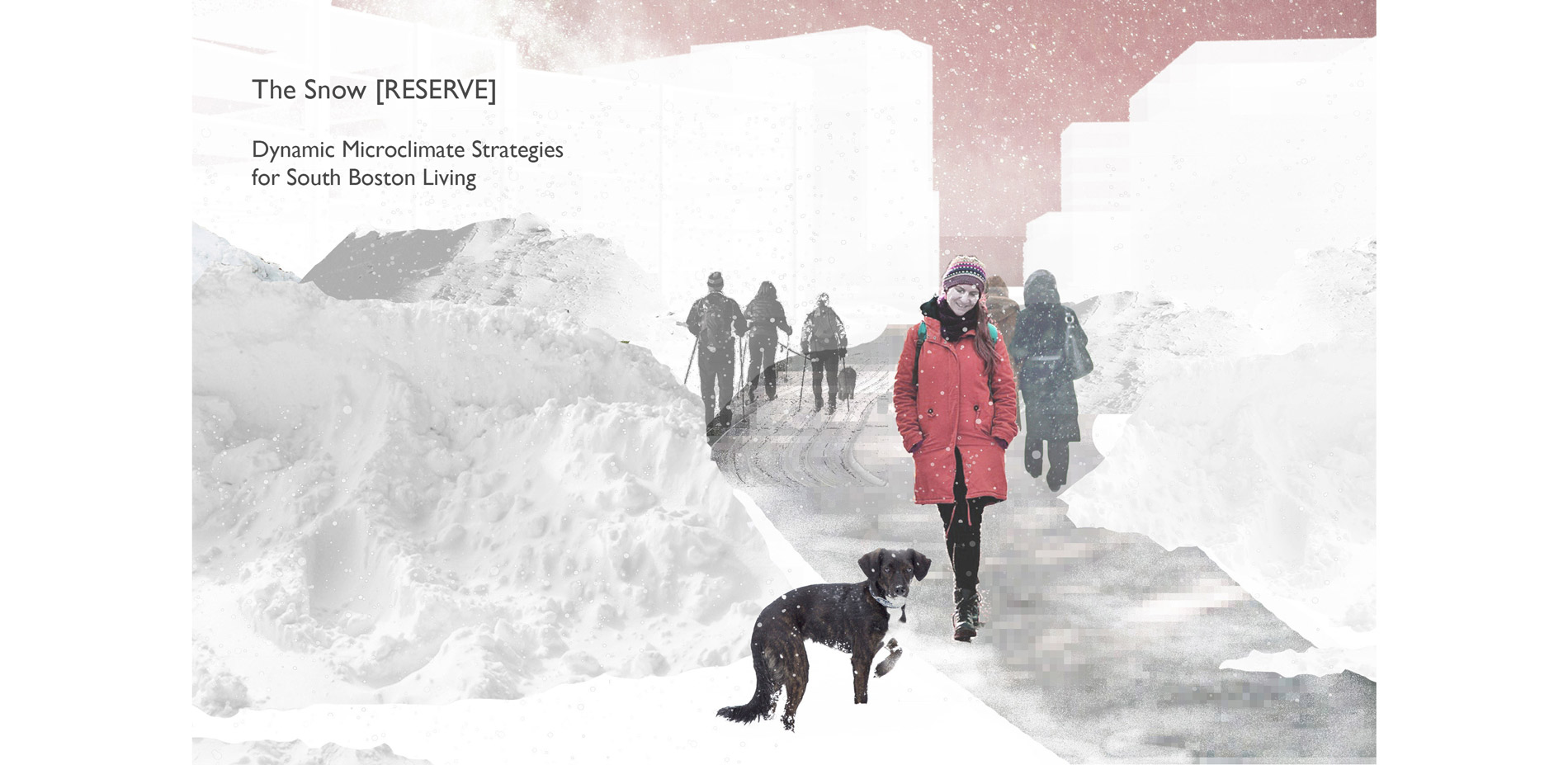
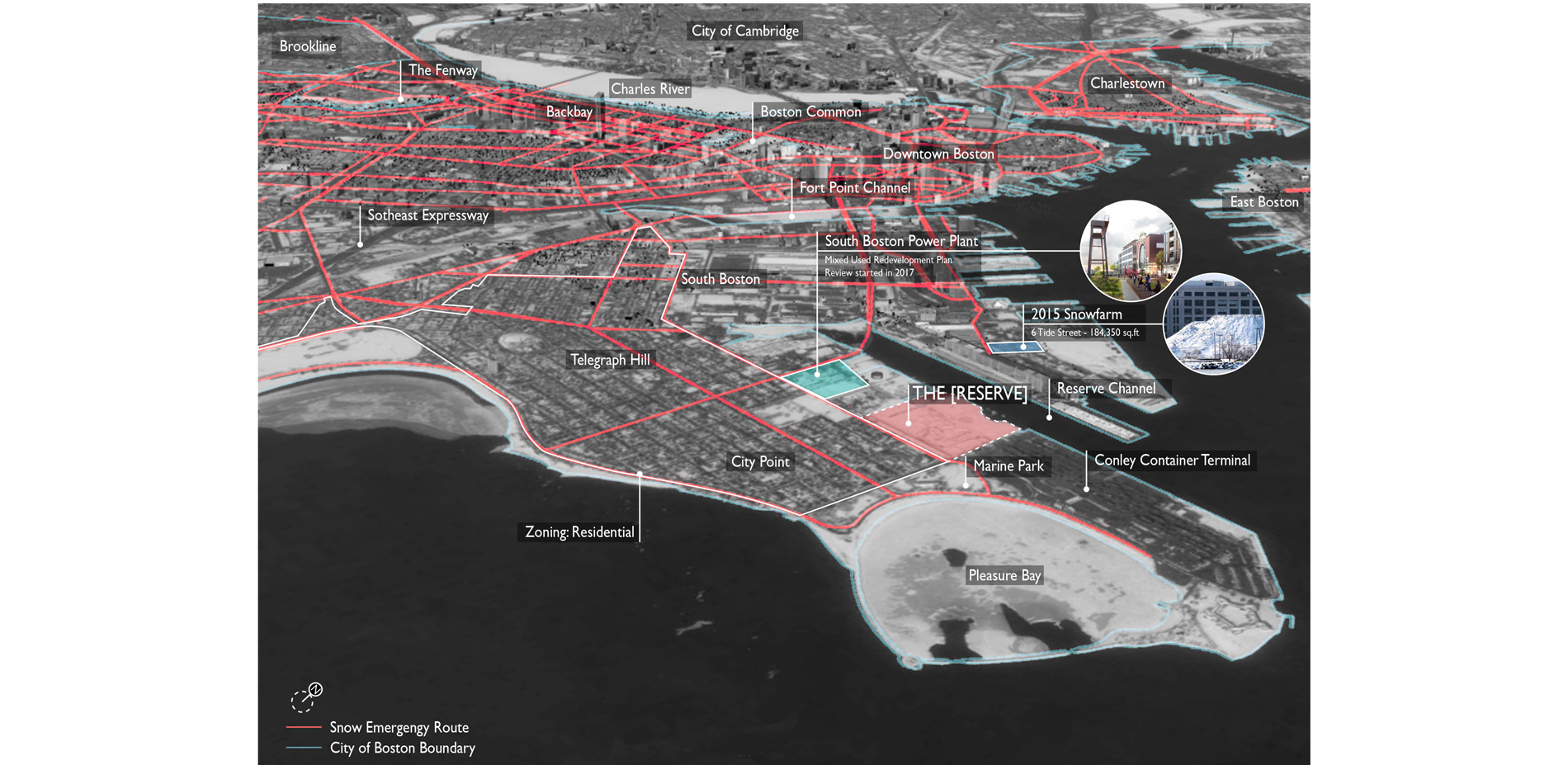
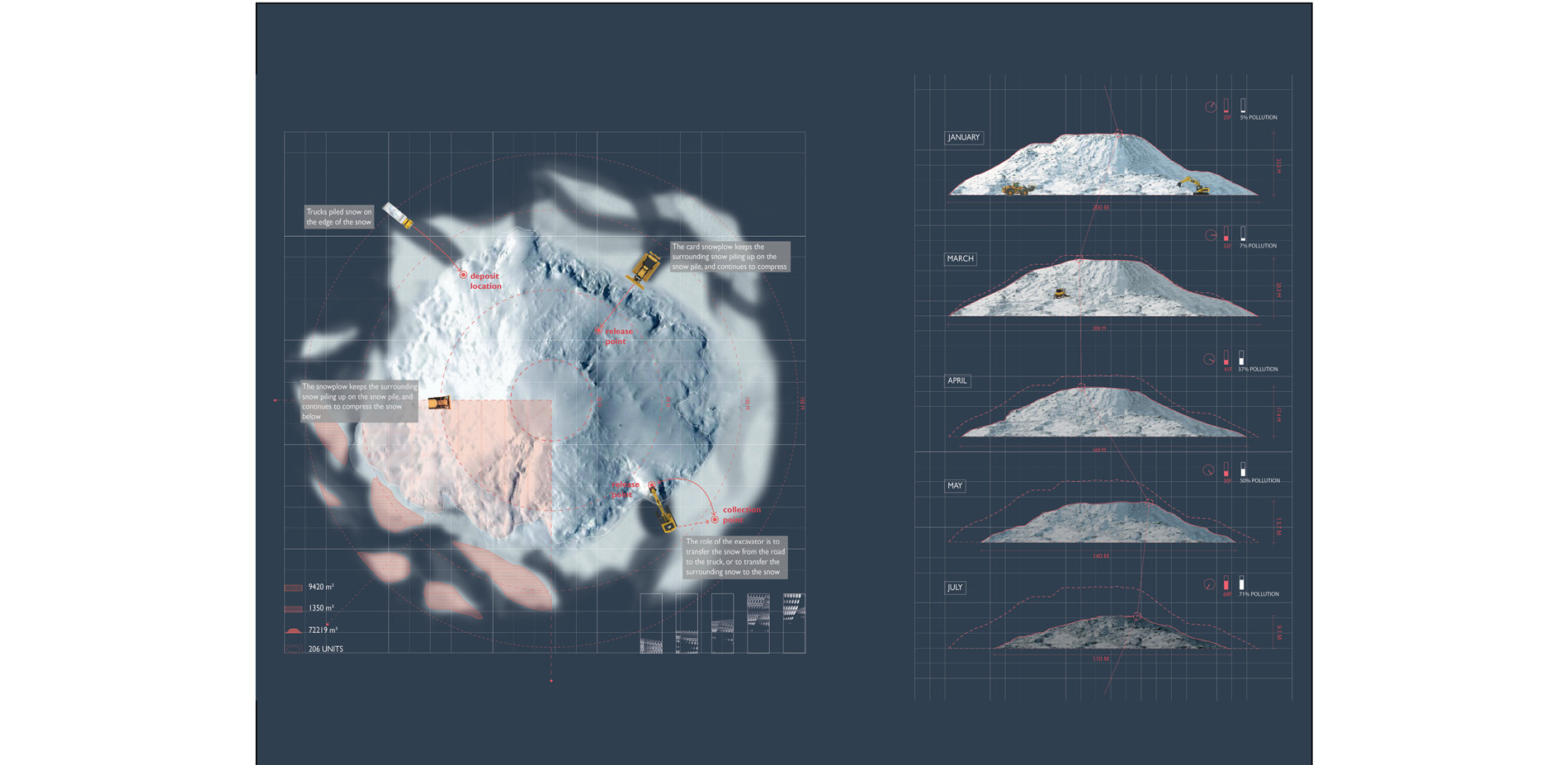
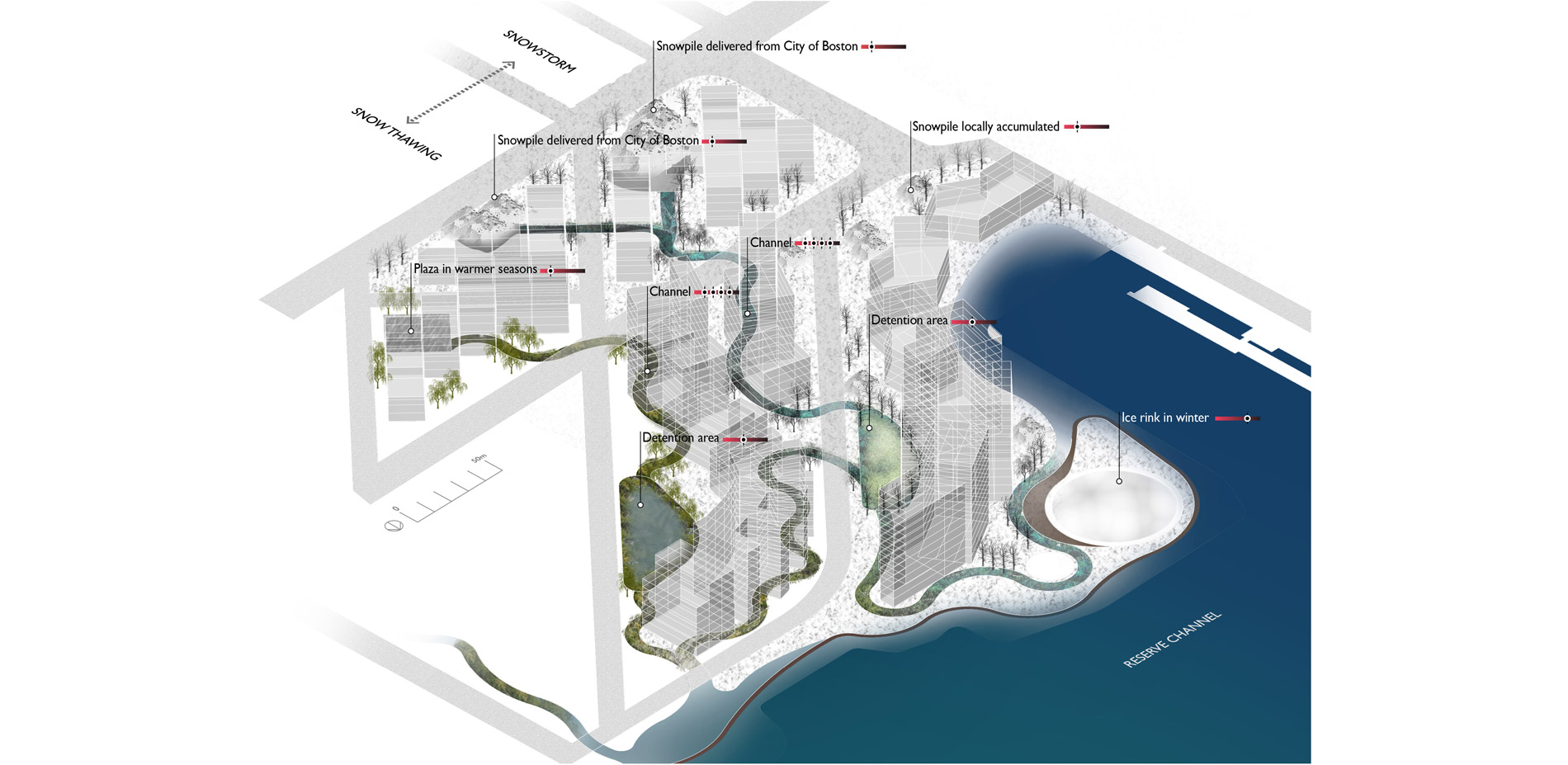
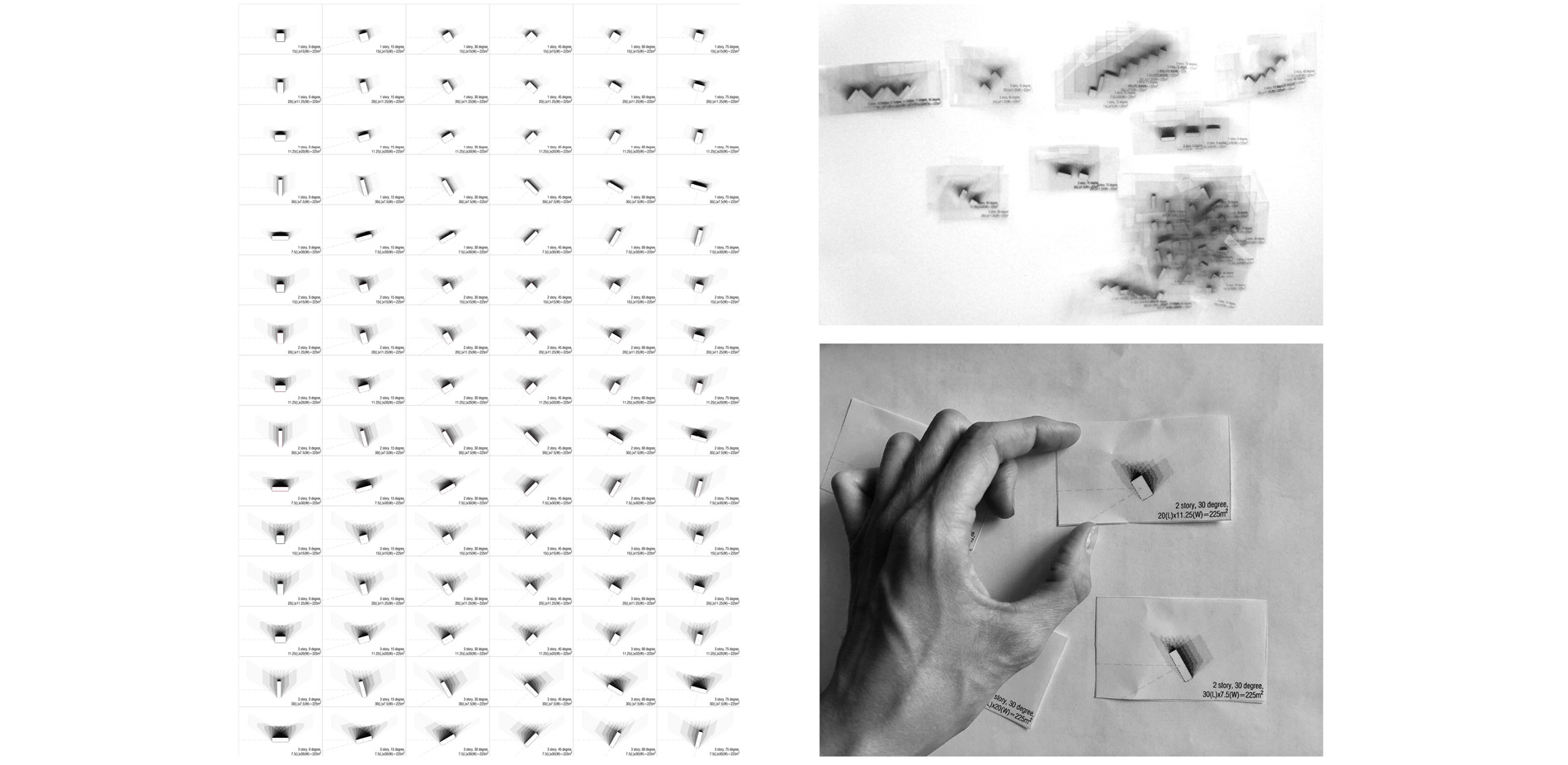
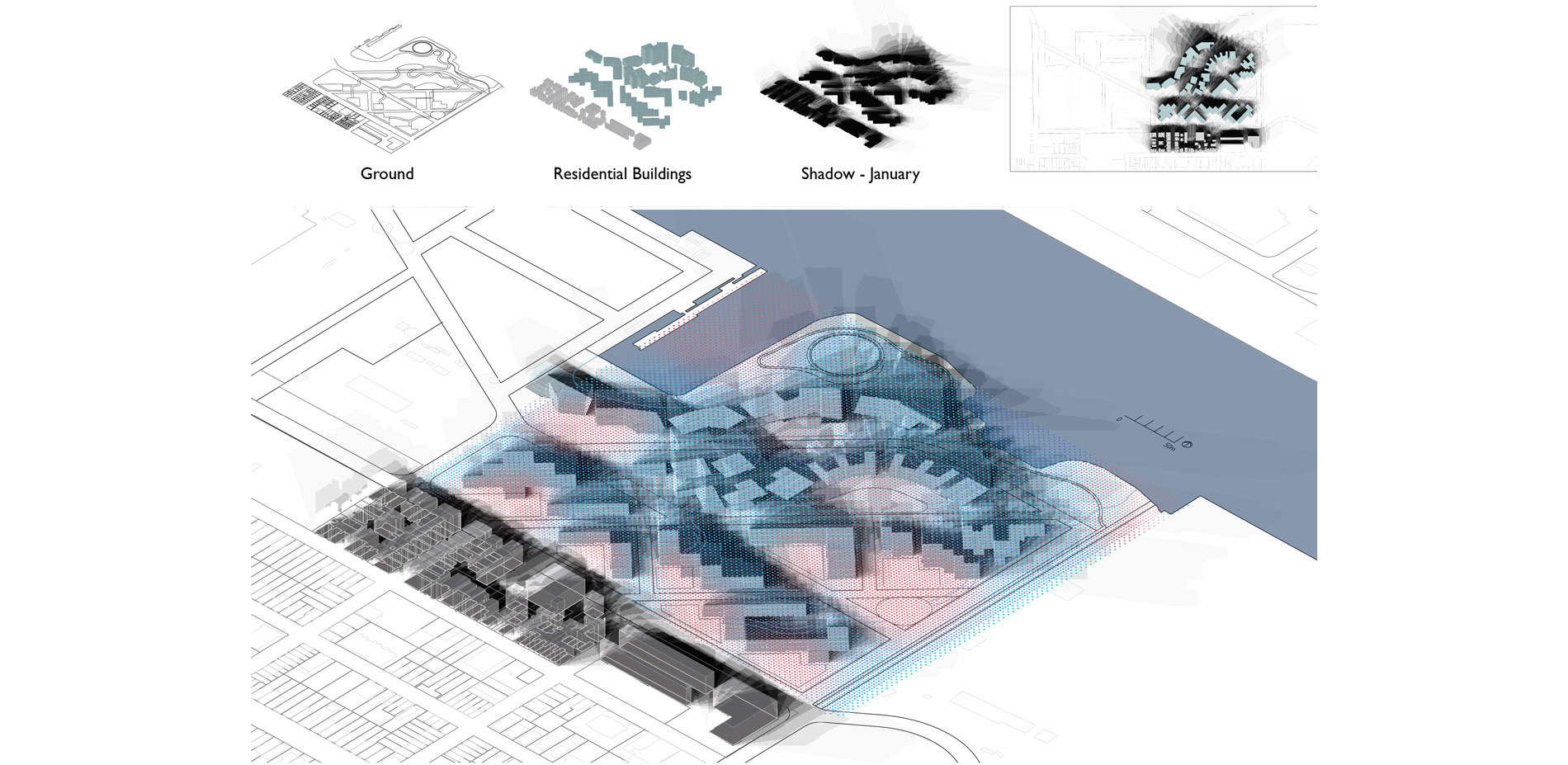
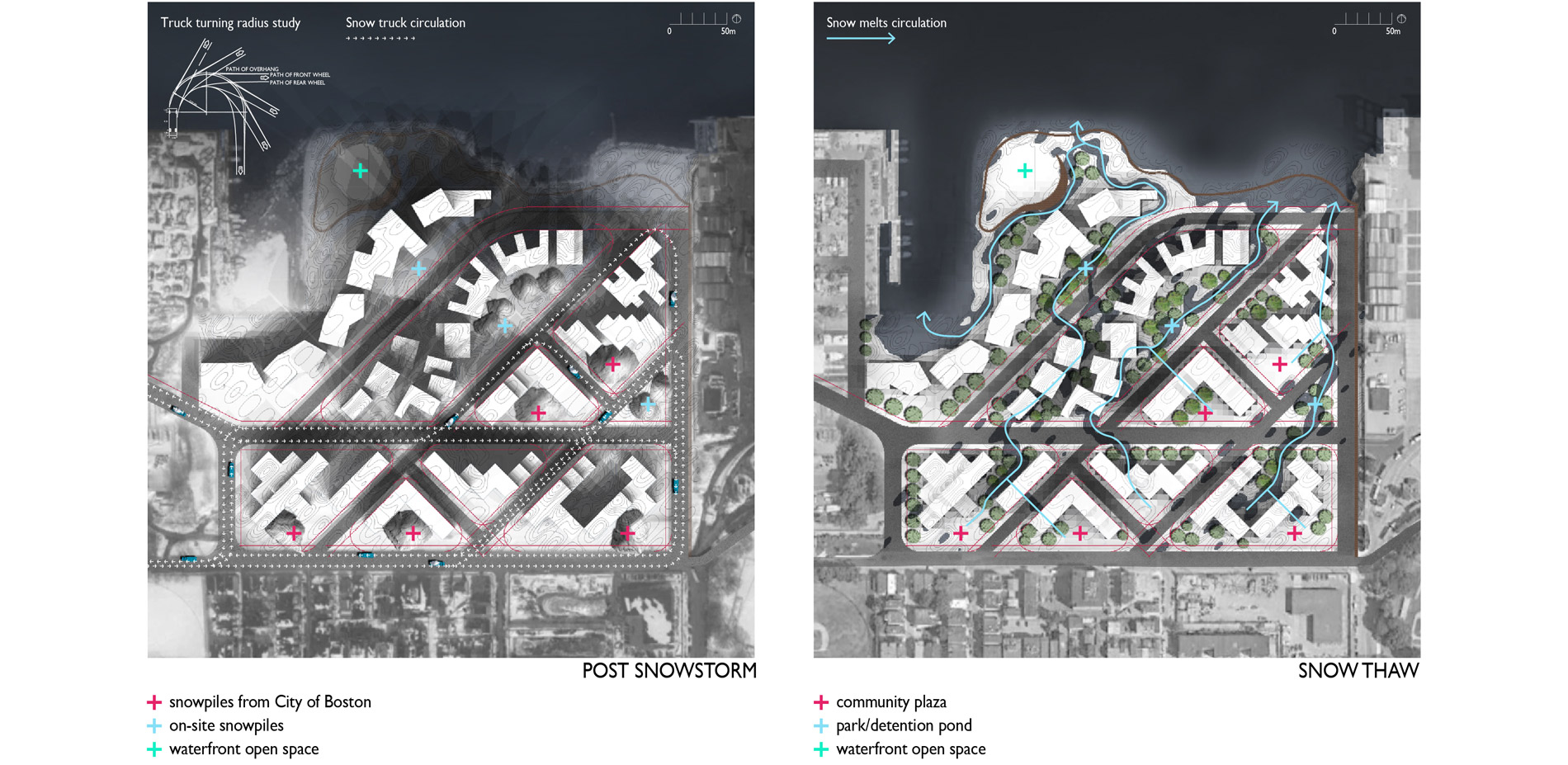
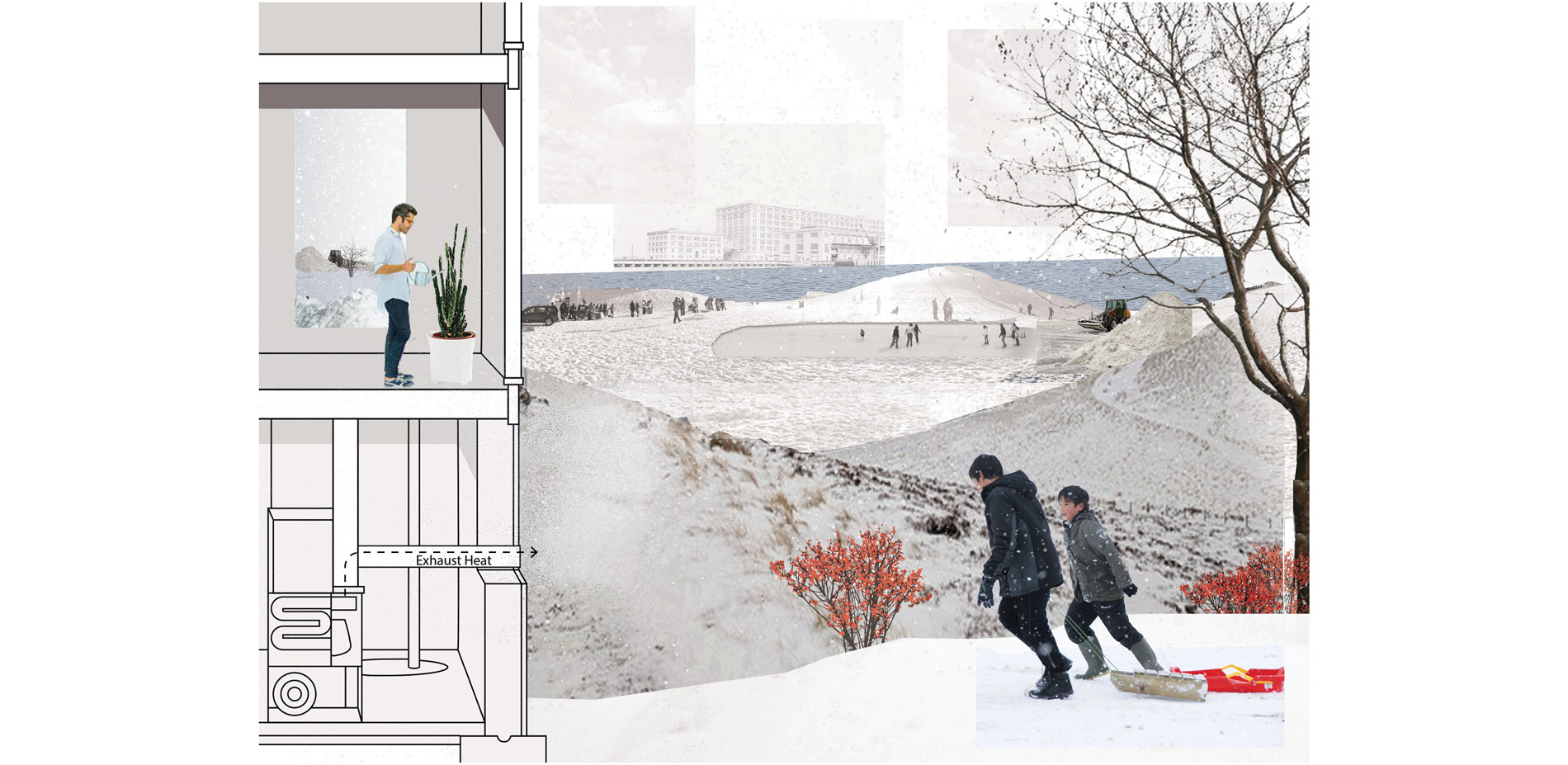
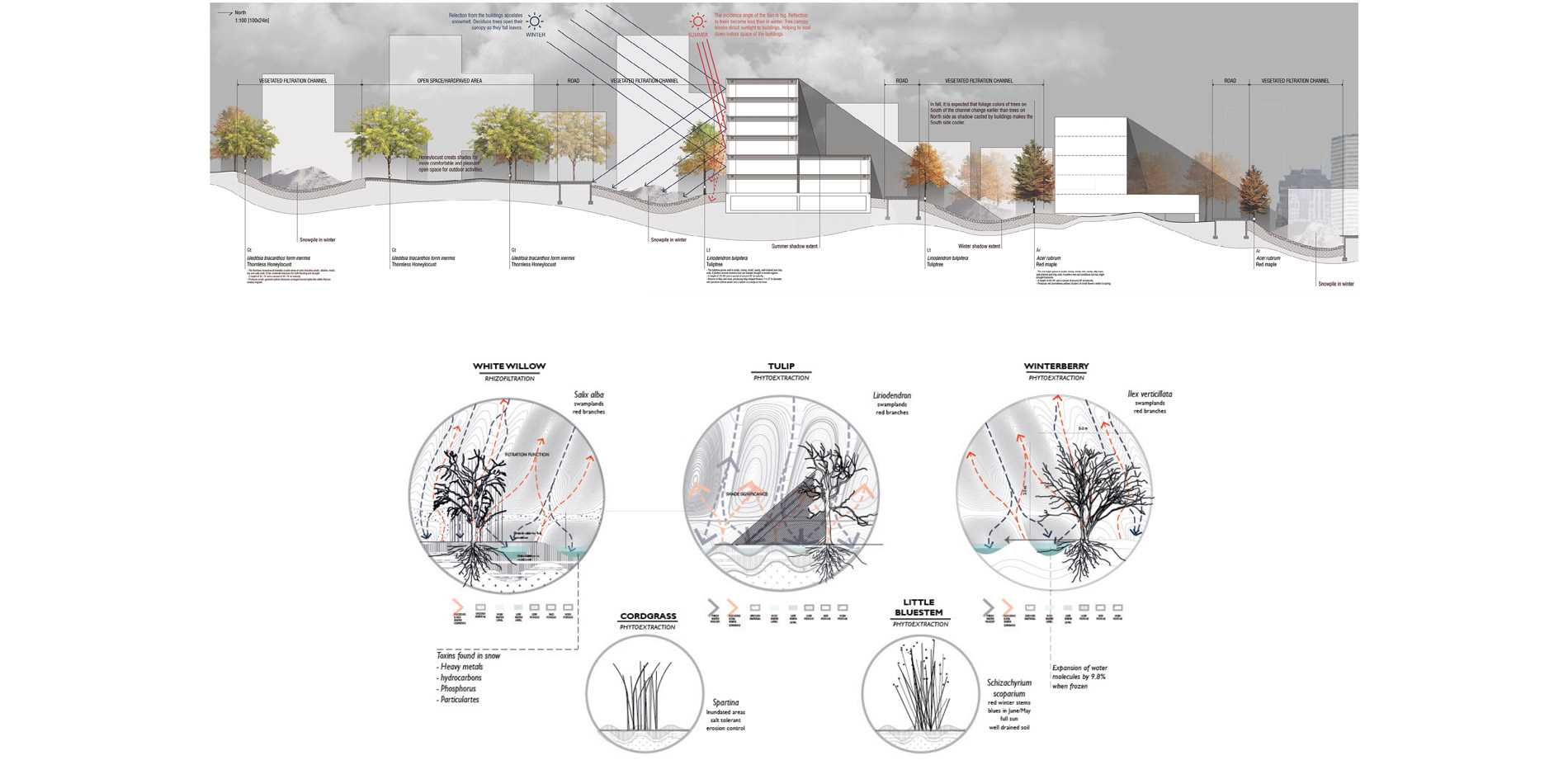
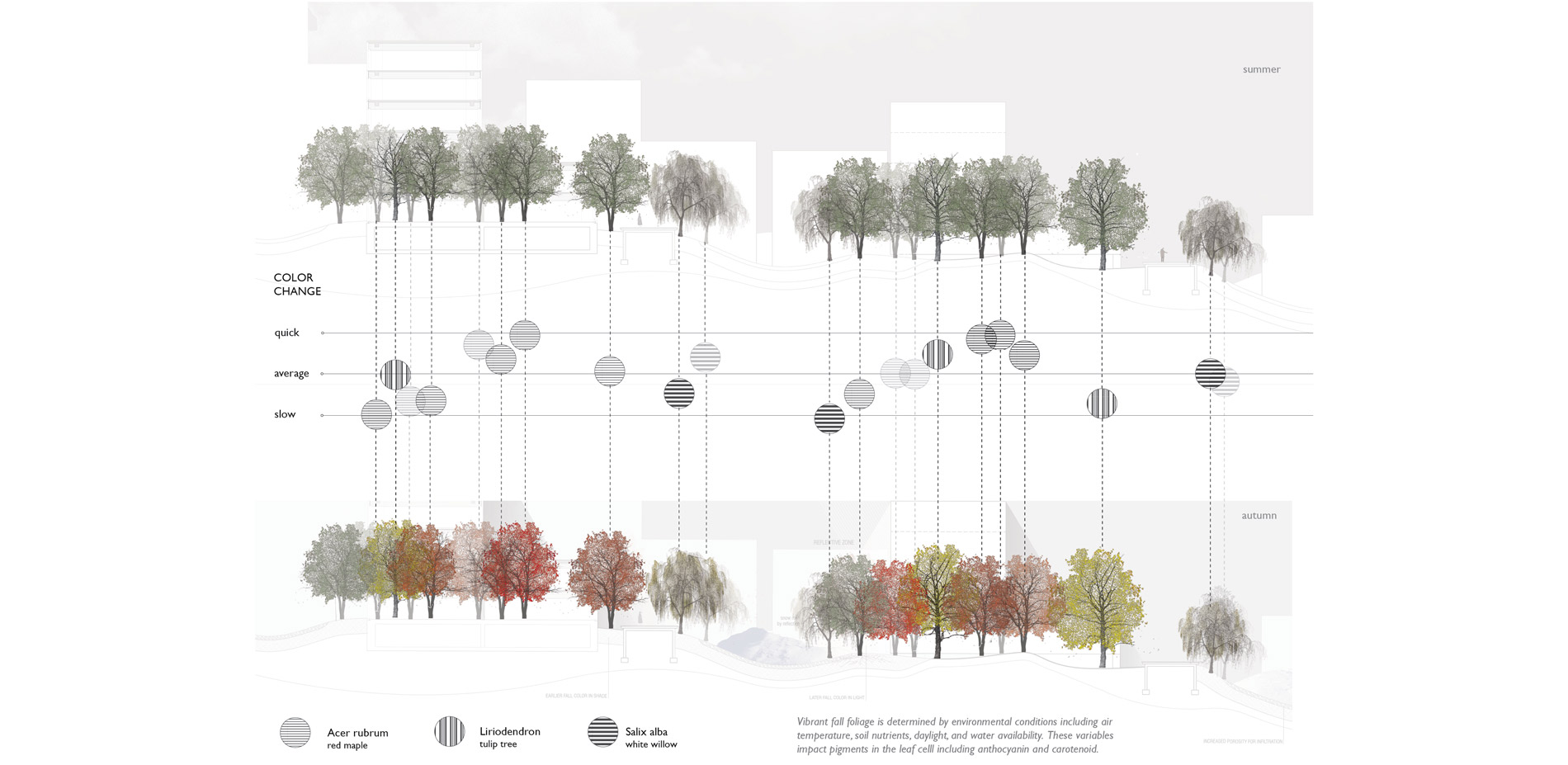
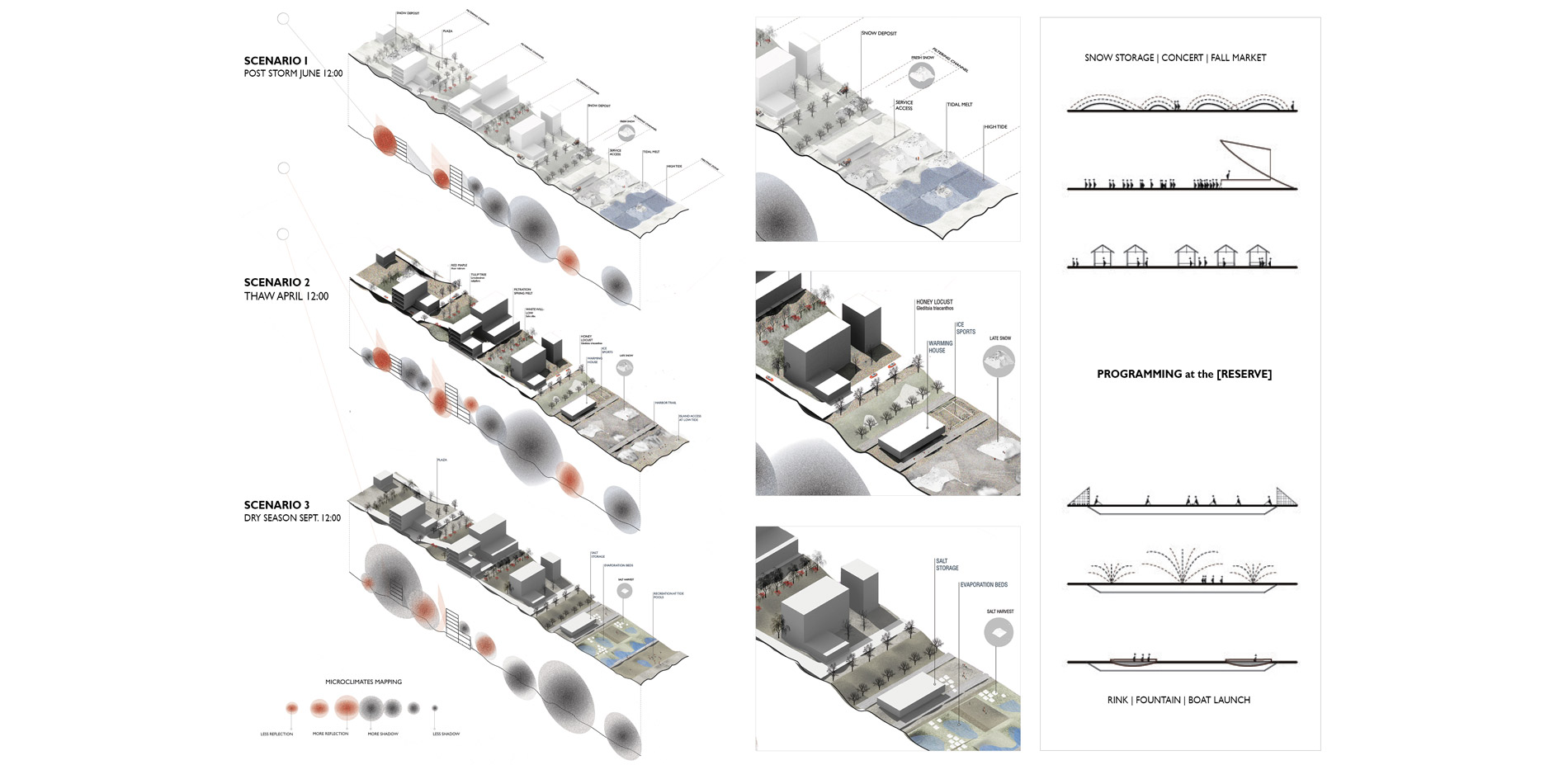
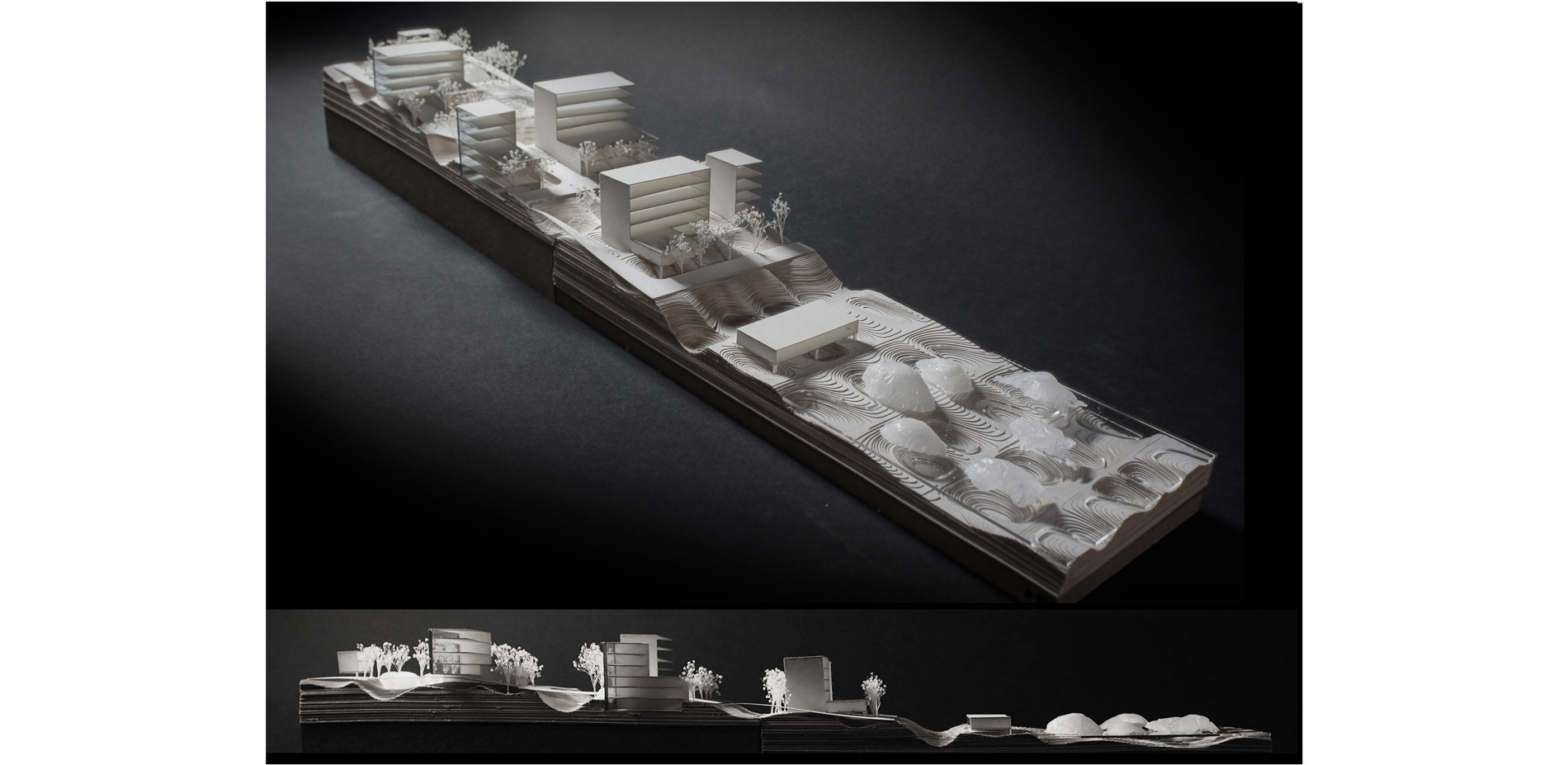
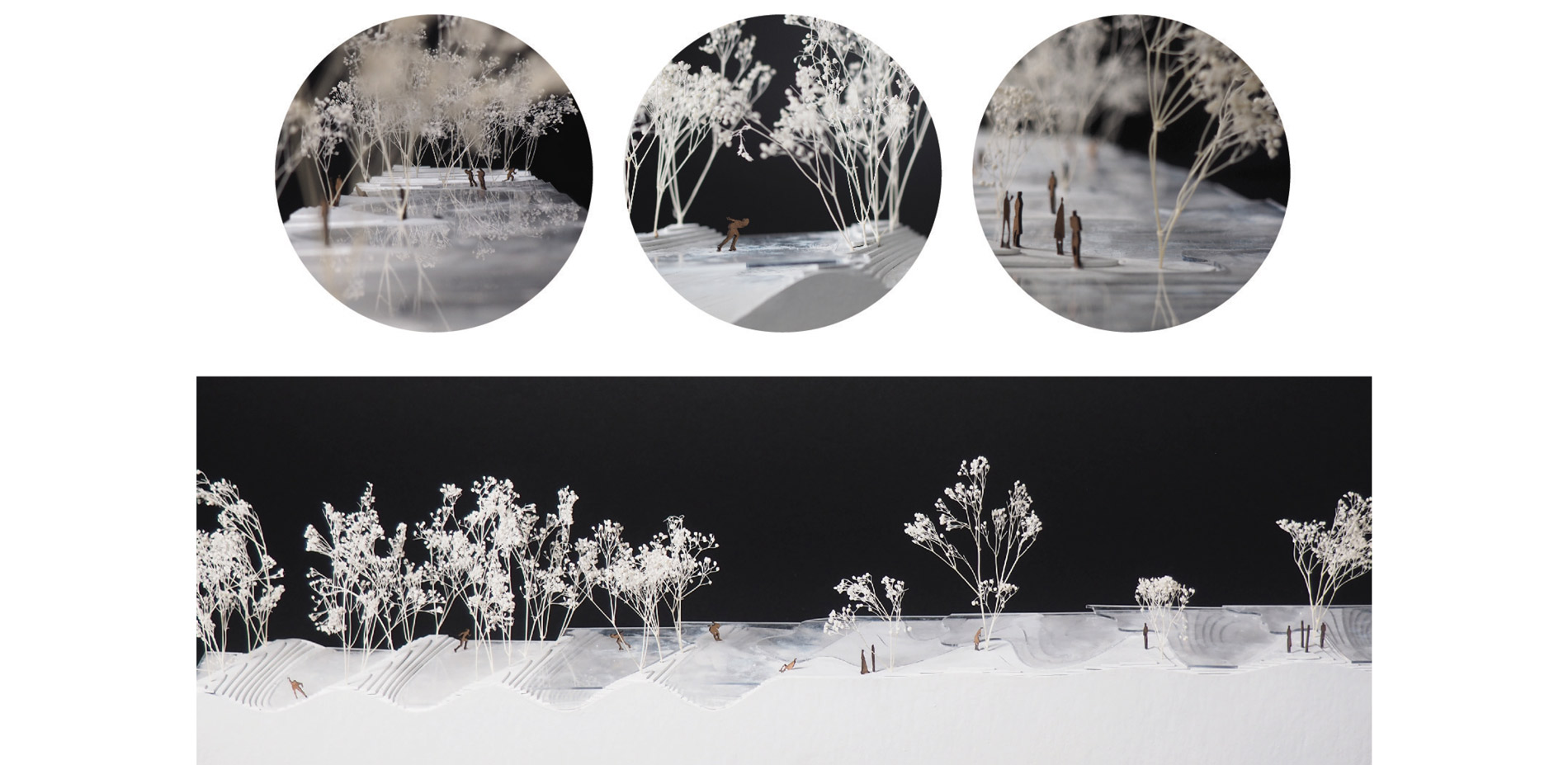
![In summer, swales and surrounding open spaces catalyze community activities at the [RESERVE].…](images/495202/495202_14.jpg)
![During snowstorms, swales and surrounding open spaces at the [RESERVE] are dedicated to serving South Boston’s snow excess.
…](images/495202/495202_15.jpg)
